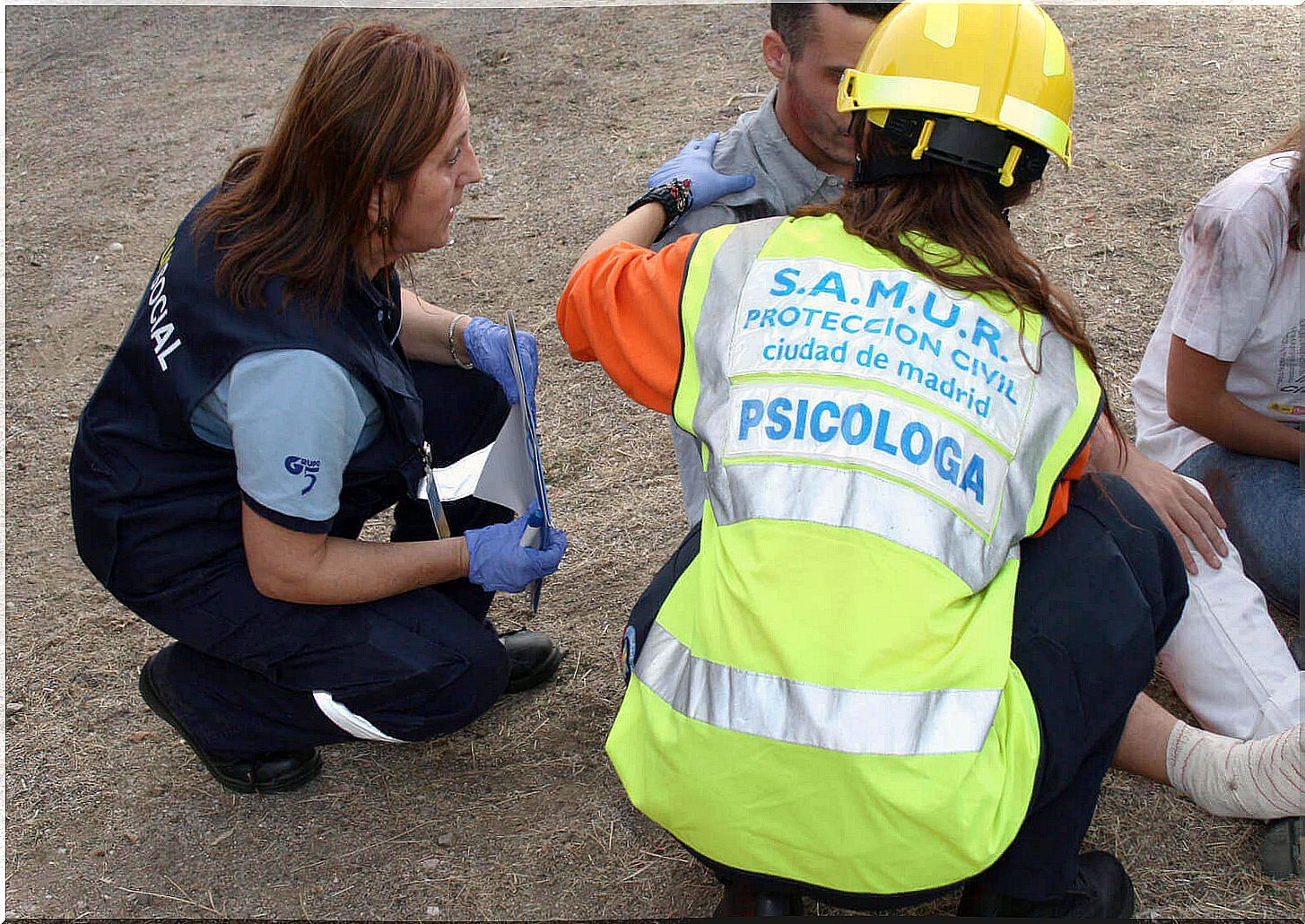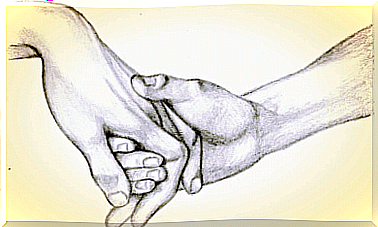Psychological Debriefing: A Tool Against Trauma

Psychological debriefing is a brief intervention performed in the first few days after a traumatic event. This event could be a natural disaster, such as an earthquake or flood, or an accident, whether it be traffic, air or rail.
In a debriefing, colleagues who lived something together or even strangers who went through a similar situation form a group that is coordinated by a professional. The objective is to generate a space for intergroup support for people who are living or have lived similar things.
This space works as a place to express yourself in a safe way, to expose all those feelings, thoughts and reactions that arose from the event. This helps to prevent future mental disorders due to the significance of what happened within each one’s life.
These people then come together to relieve the emotional burden that has accumulated behind the experience. The encounter led by psychologists seeks the verbal exposure of the experience, a difficult time for those who go through traumatic events.
Therefore, debriefing is a technique aimed at bringing closure and integrating potentially traumatic events, introducing emotional learning opportunities and techniques for managing emotions. This tool is considered to be of great help in preventing the increase of symptoms in professionals dealing with emergencies as well.

Professionals also suffer
Professionals who deal with emergencies are also human. They also get sick, suffer and sometimes need help too. They often end up being forgotten. These professionals are at high risk of suffering psychological harm linked to their work. This makes it extremely important that they receive immediate assistance in high-impact situations, even if only for a preventive purpose.
They often take on jobs that do not take into account their age, education, skills and previous experience. This can cause the appearance of stress symptoms that become more and more acute. In other cases, it is the professional himself who is not able to recognize that the situation is demanding more than he can give.
Intervention in a catastrophe has no time to happen, nor to end after it happens. The demands for professionals arise in the most diverse forms and emergencies, in shifts that are also established without prior planning or preparation.
Professionals must have several resources at hand to be used at these times. Given the seriousness, proposals may appear that are apparently ineffective, but this is normal if we understand the dimension and characteristics of the situation being faced. Professionals must also be prepared to deal with this fact.
Symptoms that emergency professionals experience
The symptoms that emergency professionals can have in the care after disasters are very varied. Physiologically, the technician who performs his function under a lot of pressure may experience fatigue, nausea, chills, shortness of breath, etc… symptoms of anxiety and exhaustion.
The professional’s cognitive level must always be very alert and vigilant, but he will have negative thoughts that he must know how to stop. After all, your affective response will be like anyone else’s: from fear, anxiety, irritation, and even emotional shock.
In the motor context, a very common feature is the inability to rest, accelerated speech and the use of shouting during conversations. To prevent these symptoms from getting worse, debriefing is, without a doubt, an exceptional tool.
Why is it important to recognize your own stress and act against it?
The effects of stress among emergency professionals can bring a lot of harm to the person. Let’s see some of these effects:
– On the desktop:
- Deterioration in the quality of your work.
- Increased absences from work.
- Less involvement.
- Increased conflicts between colleagues, superiors or subordinates.
– In the family environment:
- Conflicts in the person’s relationships.
- Need support for negative emotions and reports for which the family member is not prepared.
- Isolate yourself, close yourself off and not get involved in the family.

Putting psychological debriefing into practice
Helping emergency professionals does not end with their intervention in the field. It must continue after the end of the shift or proposal. This is an issue that should be made explicit in the work organization. A sort of maintenance task to prevent wear and tear from accumulating on the most important parts of the gear, ensuring that everything works. These pieces are just the people.
This technique of group support or emotional embracement meetings already has many followers. Many organizations use this procedure in its original or adapted version to help people manage their emotions after working on natural disasters.
These meetings have a series of rules and are run by an expert. During them, the participants narrate, in their differentiated view, the objective events and the subjective, cognitive and emotional reactions that the facts implied for each one of them.
Once the work, the shift, or the rescue or rescue is completed, there should still be a final meeting of the working group in which participants can:
- To narrate the lived facts.
- Talk about the feelings experienced.
- Find out about the symptoms and identify what you may be experiencing, or what you may experience in the next few days.
- Give and receive directions on how to act on these symptoms.

Debriefing phases
The debriefing process is not an improvisation, but a structured meeting that goes through the following phases:
- Explanation of objectives.
- Facts : each member identifies himself and explains what happened to him.
- Thoughts : Each member describes what they lived and saw and the thoughts they had.
- Reaction : comment the reactions. Each member is asked to focus on the worst they have experienced.
- Symptoms : each member comments on the stress responses he suffered immediately after the fact and those still present.
- Teachings : the specialist shows the normality of the reactions and teaches or reminds the participants about some coping mechanisms.
- Re-entry : doubts are clarified and there is the opportunity to say new things that have not yet been brought up, in addition to offering the possibility of any additional support that may prove necessary.
After the debriefing, when everything is “back to normal”, emergency professionals may continue to manifest some symptoms. These symptoms include rejection of rest, self-criticism about your performance, feeling misunderstood within your closest relationships or acquaintances, etc.
As we have seen, the stress that can be produced in the face of emergency interventions or in a catastrophe can reach levels that are very high and difficult to manage. The debriefing takes place between the first 24 to 72 hours after the critical incident.
Due to the need for debriefing, the objective is to put the suffering into words, give a structure to the events and alleviate the stress caused in the participants by the experience. This is done in a planned and structured way by subject matter experts.
It’s about learning to understand and deal with the normal reactions that arise from a difficult traumatic event. This is done in a space where people feel, finally, safe, accompanied and therapeutically guided in the process of integration and solving their problems.
references
- Costa Marcé, A. & Gracia Blanco, M. de. (2002). Debriefing and psychological tria in intervention, in crisis: a review . Debriefing and Psychological Triage in crisis intervention: a review , 23 (5), 198-208.
- Echeburúa, E. & Corral Gargallo, P. de. (2007). Intervention in crisis in victims of traumatic events: how, how and why? Crisis intervention in victims of traumatic events: when, how and what for? , 15 (3), 373-387.









